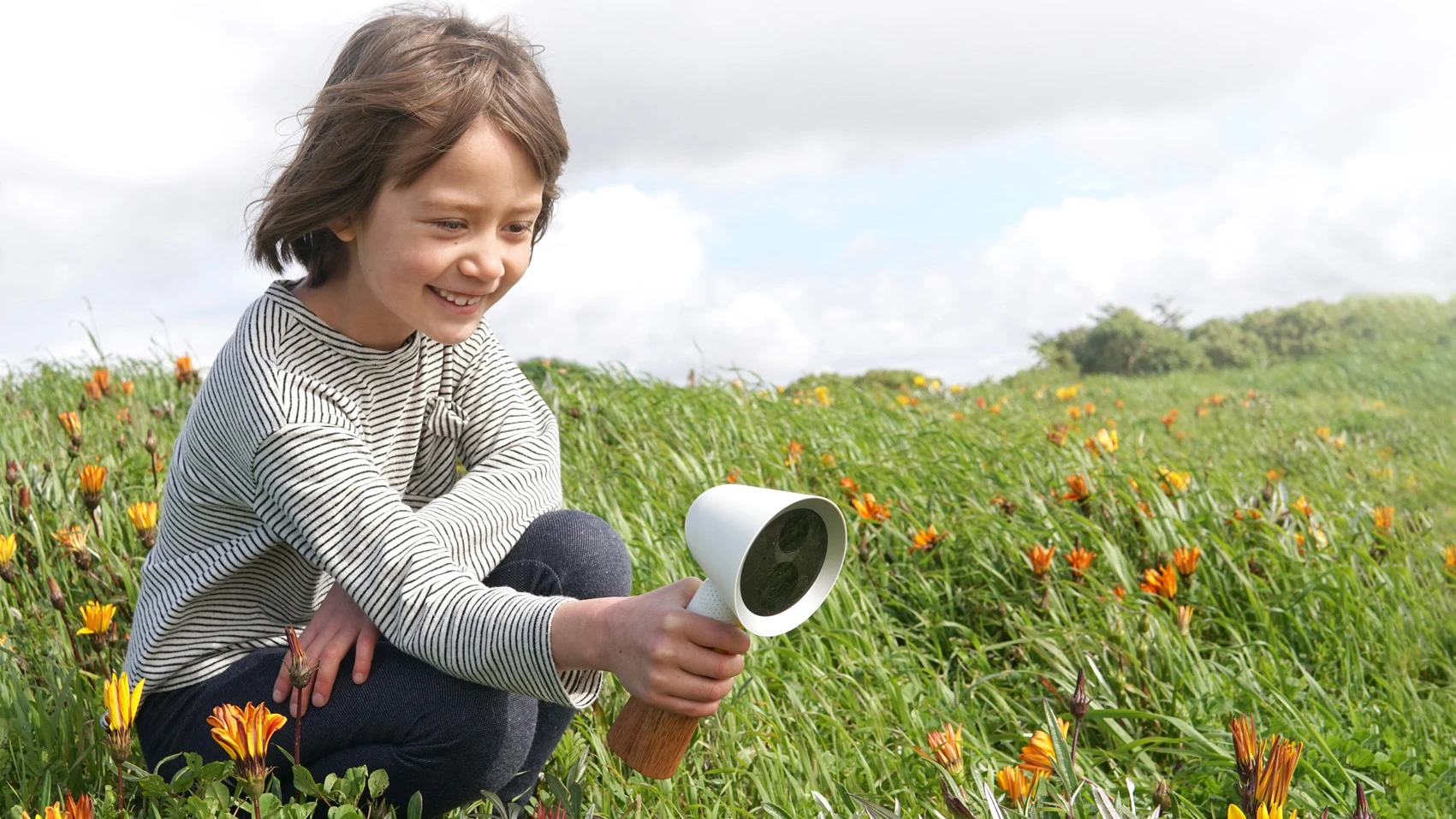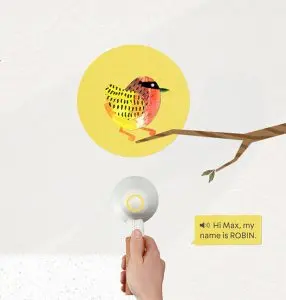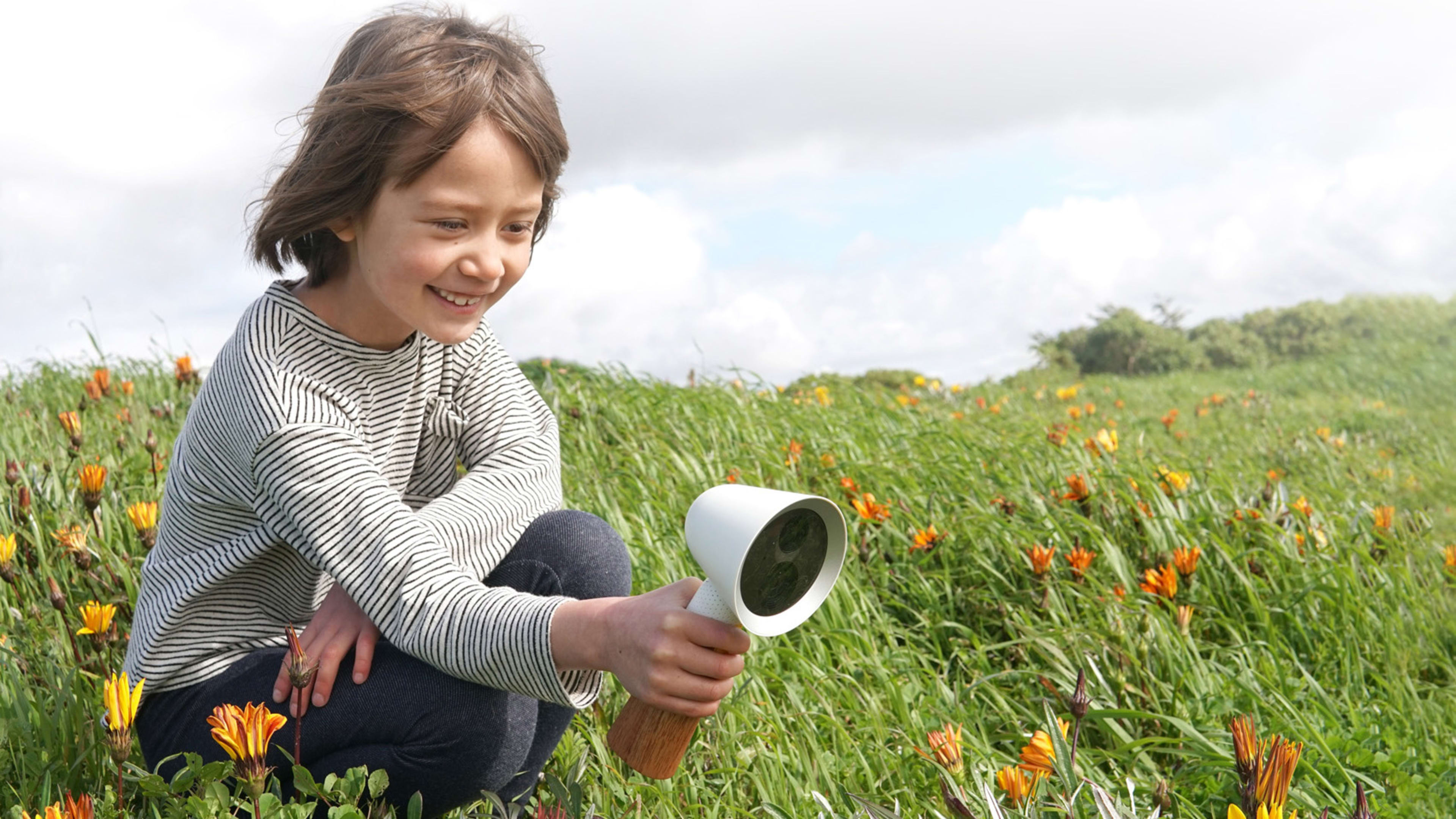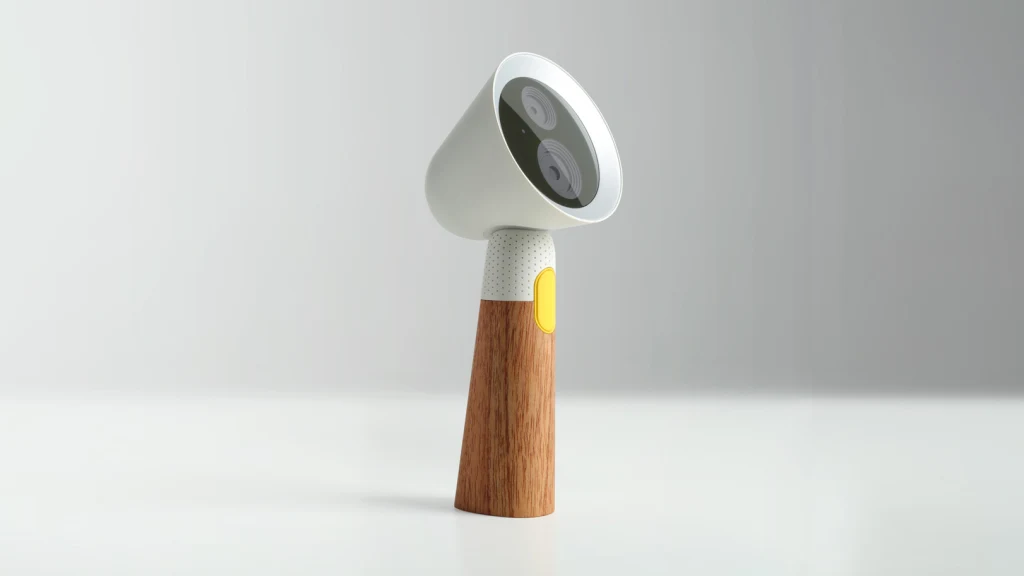Gadi Amit’s fondest childhood memories are of playing outside and looking for bugs. “I followed ants all the time, it was amazing,” he says.
But Amit, founder of the San Francisco design studio NewDealDesign, worries that nowadays, kids are more absorbed by screens than by bugs. That’s why his studio has created a new concept for a piece of technology that encourages kids to go outside and interact with the world around them. Spot is a handheld device that looks like a high-tech magnifying glass: When kids point Spot at a bug or a bird, the device uses object recognition to identify what type of bug they’re looking at. Embedded speakers with Spot would identify what kind of animal the child has found, and make it seem like the critter is saying hello to the child. Using audio eliminates the need for a screen, but still provides the kind of interactivity digital-native children are so used to.


“We wanted to anchor it at an early age and really build on the children’s natural curiosity,” Amit says. “We are skewing it toward natural exploration because we feel kids get too little of that today.” That means that if a kid points Spot at a car, it’s not going to recognize anything. But point it at a bird, and the device will light up and tell the child what bird they’re looking at.
Many companies are trying to merge physical and digital play, from Pokémon Go to Lego to Hot Wheels. But this play is still largely mediated through a screen, and it’s focused on encouraging children to interact with the brand rather than the world around them. When Pokémon Go was first released, for instance, there were reports of people who fell off a cliff because they were so absorbed in their phones.
But Spot was designed to help kids leave the screen at home and go explore the world around them. “This is an honest attempt to create a smart device to allow kids to be kids…to freely and willingly and optimistically play around the yard or the park and learn while doing that using technology positively.”
Right now, Spot is just a concept, but the technology that it uses—machine learning for object recognition, and a pico projector for the story afterward—is available right now. The only challenge may be training an algorithm to identify every single bug correctly, but Amit says he’s optimistic that the tech isn’t far off. He thinks that if an investor were interested in turning Spot into a real product, such kinks could be hammered out within a year.
In some ways, Spot is a counterpoint to the countless kids’ tech toys that are focused on teaching kids to code, which, while important, often lack an element of joy or playing just for the sake of it. “We’re not trying to teach people to program, but to use technology more as an enabler of imagination,” Amit says. “You can create an object that is full of the bells and whistles of tech but still allows people to go out and explore and learn by themselves and be free rather than confined to a screen-based user interface.”
Recognize your brand’s excellence by applying to this year’s Brands That Matter Awards before the early-rate deadline, May 3.




